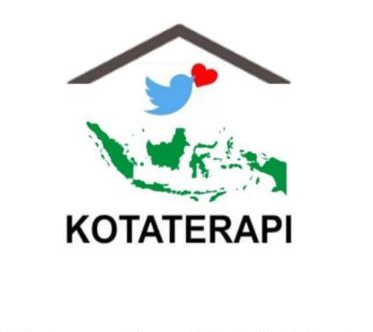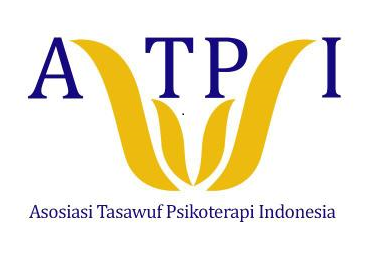Hijrah in the Sufisme Perspective
Study of Religious Phenomenology on the Role and Activities of Da'wah of Youth Hijrah in Cirebon
DOI:
https://doi.org/10.28918/jousip.v4i1.7462Keywords:
Youth Hijrah Phenomenon, Islamic Thought, Community DiversityAbstract
This article aims to describe and analyze Islamic thinking about the phenomenon of Youth Hijrah in society. The term is used as an expression of the phenomenon of people who are new to or pay attention to Islam after paying little attention to it before. This research is aimed at answering how Islamic thoughts and views regarding Youth Hijrah, historical roots, the role, and da'wah activities of the Youth Hijrah are associated with the diversity of society in Cirebon. This research was conducted to find out, and analyze about; 1) Islamic thoughts and views on Youth Hijrah, 2) the Historical roots, role, and da'wah activities of Youth Hijrah in Cirebon, 3) The concept of religious phenomenology towards Youth Hijrah in Cirebon. The research approach used is qualitative. The method used is analytical descriptive. The results of this study are: First, Hijrah means "at-tarku", leaving something behind. Hijrah is essentially tarkul manhiyyat, leaving various religious prohibitions. Therefore, true migration is not limited to outward movements but also includes inner movements or changes. Second, the Youth Hijrah Phenomenon is a form of response among urban youth in responding to various social, economic, political, and technological changes associated with religious understanding. Third, the success of a religious movement is highly dependent on the community's affirmation of the discourse it echoes, especially in the Cirebon region, which has a very religious community.
References
Abbad, Ibnu (2012), Ghayatul Mawahibil Aliyyah, Indonesia, Al-Haramain Jaya: juz I.
Andrew Feenberg. 2015. “Lokacs’s Theory of Reification and Contemporary Social Movements,” dalam Rethinking Marxism, A Journal of Economics, Culture & Society, 27:4,
Badruddin Mahmud bin Ahmad Al-‘Aini, (1421 H/2001 M) `Umdah al-Qari Syarh Shahih al-Bukhari, Beirut, Darul Kutub Al-‘Ilmiyyah: , juz I.
Herbert Marcuse, 1964. One Dimensional Man, Studies in The Ideology of Advanced Industrial Society, New York: Routledge.
Hillal Dessouki, 1982. Islamic resurgence in the Arab World. Newyork Preager.
H. Schilderman, (2014) The Concept of Religion: Defining and Measuring Contemporary Beliefs and Practices, Leiden: Brill.
John W. Creswell. 2007, Qualitative Inquiry & Research Design, Choosing Among Five Approaches, London: Sage Publishing.
Joni Y.Sasaki & Heejung S. Kim, “At The Intersection of Culture and Religion: A Cultural Analysis of Religion’s Implications for Secondary Control and Social Affiliation,” dalam Journal of Personality and Social Psychology, Vol. 101. No. 2. 2011, hlm. 402.
Khoiriyah, N., Muaz, A., & Atamimi, A. B. (2023). Intensitas Puasa Senin Kamis terhadap Kematangan Emosi Remaja Putri: Studi di Lembaga Kesejahteraan Sosial Anak Taman Harapan Muhammadiyah Kota Bandung. JOUSIP: Journal of Sufism and Psychotherapy, 3(2), 197-212.
Khurshid Ahmad, 1995. “The Nature of Islamic Resurgence, in Esposito, Voices of Resurgence Islam, New York: Oxford University Press.
Muhammad bin ‘Allan As-Shiddiqi. ( Tanpa keterangan Tahun), Dalilul Falihin li Thuruqi Riyadhis Shalihin, Beirut, Darul Kutub Al-‘Arabi: juz I.
M. Quraish Shihab. (2011), Membaca Sirah Nabi SAW Dalam Sorotan Al-Qur’an dan Hadist-Hadist Shahih, Tangerang: Lentera Hati.
Nico Syukur Dister. 1982, Pengalaman dan Motivasi Beragama, Jakarta: LEPPENAS.
Nicholas Walliman. 2011, Research Methods, The Basics, New York: Routledge.
Ramayulis, Psikologi Agama 2002 Jakarta: Kalam Mulia.
Rifki Rosyad , 1995. A Quest for True Islam, A Study of The Islamic Resurgence Movement Among The Youth in Bandung. Australia; ANU Press.
Shafiyyurrahman al-Mubarakfury. (2008),Cahaya di Atas Cahaya (Membaca Kekuatan dan Kecerdasan Kepribadian Nabi Muhammad SAW, Yogyakarta: Diva Press.
Vincent J. Miller, 2014. “What Does Globalization Do to Religion,” dalam Bernard Adeney-Risakotta (ed.), Dealing with Diversity, Religion, Globalization, Violence, Gender, and Disaster in Indonesia, Geneva/Yogyakarta: Globethics.
Yasraf Amir Piliang & Jejen Jaelani. (2018), Teori Budaya Kontemporer, Penjelajahan Tanda dan makna. Yogyakarta: Aurora.
Zainuddin Abdurrauf Al-Munawi. (1408 H/1988 M), Taisir bi Syarhil Jami’is Shaghir, (Riyadh, Maktabah Al-Imam As-Syafi’i: 1408 H/1988 M), cetakan ketiga, juz I
Interviews
Interview with AH, one of the muhajirin and UMC students, on January 6, 2023, at the Mosque Complex of Universitas Muhammadiyah Cirebon.
Interview with MDJ, one of the muhajirin and UMC students, on January 16, 2023, at the Laboratory Yard Complex of Universitas Muhammadiyah Cirebon.
Interview with DER, one of the muhajirin and UMC students, on January 22, 2023, at the Campus Cafeteria Complex of Universitas Muhammadiyah Cirebon.
Interview with MSY, one of the muhajirin from Bandung studying at Muhammadiyah University Cirebon, on January 24, 2023, at the Mosque Complex of UMC.
Hanan Attaki, in his Lecture at Al Munawaroh Mosque, PLTG Gunung Jati Cirebon Complex, on December 16-18, 2022, about the history of Pemuda Hijrah.
Interview with Wildan Walhidayah, Department of Program and Development of Pemuda Hijrah at Al Munawaroh Mosque, PLTG Gunung Jati Cirebon Complex, on December 28, 2022.
Downloads
Published
Issue
Section
License
Copyright (c) 2024 Abdul Basit Atamimi Basit

This work is licensed under a Creative Commons Attribution-ShareAlike 4.0 International License.

















